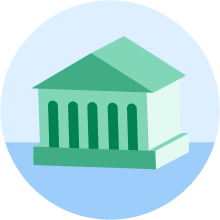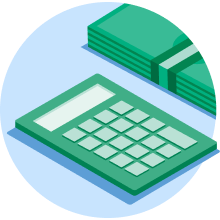Best Home Improvement Loans of 2025



A home improvement loan can finance home renovations and repairs. The best loan covers your project's cost and fits your budget.
Checking rates is free and won't impact your credit score.



A home improvement loan can finance home renovations and repairs. The best loan covers your project's cost and fits your budget.
Checking rates is free and won't impact your credit score.
Best for overall home improvement loan
2025 NerdWallet award winner
6.49 - 24.89%
$5K - $100K
660
2 to 7 years
Best for large loan amounts
2025 NerdWallet award winner
8.74 - 35.49%
$5K - $100K
None
2 to 7 years
Best for borrowers with fair credit
2025 NerdWallet award winner
7.74 - 35.99%
$1K - $50K
600
2 to 7 years
Best for secured loan options
6.99 - 35.99%
$2K - $50K
600
3 to 5 years
Best for small and large loans
6.70 - 35.99%
$1K - $75K
None
3 to 5 years
Best for existing Wells Fargo customers
6.74 - 26.74%
$3K - $100K
None
1 to 7 years
Best for credit union members
7.89 - 18.00%
$500 - $50K
None
6 months to 7 years
Our team of consumer lending experts follows an objective and robust methodology to rate lenders and pick the best.
30+
Lenders reviewed
We review over 35 lenders, including major banks, top credit unions, leading digital platforms, and high interest installment lenders operating across multiple states.
25+
Categories assessed
Each lender is evaluated across five weighted categories and 27 subcategories, covering affordability, eligibility, consumer experience, flexibility, and application process.
60+
Data points analyzed
Our team tracks and reassesses hundreds of data points annually, including APR ranges, fees, credit requirements, and borrower tools, ensuring up to date, accurate comparisons.
We evaluate more categories than competitors and carefully weigh how each factor impacts your experience.
NerdWallet’s review process evaluates and rates personal loan products from more than 30 financial technology companies and financial institutions. We collect over 60 data points and cross-check company websites, earnings reports and other public documents to confirm product details. We may also go through a lender’s pre-qualification flow and follow up with company representatives. NerdWallet writers and editors conduct a full fact check and update annually, but also make updates throughout the year as necessary.
Our star ratings award points to lenders that offer consumer-friendly features, including: soft credit checks to pre-qualify, competitive interest rates and no fees, transparency of rates and terms, flexible payment options, fast funding times, accessible customer service, reporting of payments to credit bureaus and financial education. Our ratings award fewer points to lenders with practices that may make a loan difficult to repay on time, such as charging high annual percentage rates (above 36%), underwriting that does not adequately assess consumers’ ability to repay and lack of credit-building help. We also consider regulatory actions filed by agencies like the Consumer Financial Protection Bureau. We weigh these factors based on our assessment of which are the most important to consumers and how meaningfully they impact consumers’ experiences.
NerdWallet does not receive compensation for our star ratings. Read more about our ratings methodologies for personal loans and our editorial guidelines.
A home improvement loan is an unsecured personal loan that you use to cover the costs of home upgrades or repairs. They're sometimes called home renovation loans or home remodeling loans.
Lenders provide loans of up to $100,000 in a lump sum, which you repay in monthly installments, usually over two to 12 years. A loan with a long repayment term may have low monthly payments, but you’ll pay more interest over the life of that loan than one with a shorter repayment term.
Home improvement loans do not require collateral. Missed or late loan payments will negatively impact your credit, but you won’t risk losing your home.
Your credit and income will determine whether you qualify and the interest rate you receive. Once approved, you may receive your loan within one to two days.
Some lenders let you add a co-signer or co-borrower to your application. Adding someone with better credit or higher income to the loan application may reduce your annual percentage rate (APR) or increase the amount you can borrow.

Home improvement loan annual percentage rates range from about 7% to 36%. APRs represent the entire cost of the loan, including fees the lender may charge.
Lenders decide your rate on the loan primarily by evaluating your credit score, credit history and debt-to-income ratio. Here's what current personal loan rates look like, on average:
Borrower credit rating | Score range | Estimated APR |
|---|---|---|
Excellent | 720-850. | 11.81%. |
Good | 690-719. | 14.48%. |
Fair | 630-689. | 17.93%. |
Bad | 300-629. | 21.65%. |
Source: Average rates are based on aggregate, anonymized offer data from users who pre-qualified through NerdWallet from January 1, 2024, through December 31, 2024. Rates are estimates only and not specific to any lender. The lowest credit scores — usually below 500 — are unlikely to qualify. Information in this table applies only to lenders with maximum APRs below 36%.
» MORE: Current average personal loan rates
Nerdy Tip
Even if you get a low rate, be sure the monthly payments fit into your budget. Use our home improvement loan calculator to see what loan amount, rate and repayment term you need to get an affordable monthly payment.

Online lenders offer a convenient way to find and compare personal loans from anywhere.

Some national banks offer personal loans with competitive rates and in-person support.

Credit unions may offer lower annual percentage rates and flexible terms for their members.
» MORE: Where to get a personal loan
» MORE: Personal loan application requirements
Unsecured loans can cover almost any home improvement project. How much you need varies based on your location, home size and how extensive your plans are.
Here are some common projects and how much you could pay for each, based on the most recent cost estimates available:
Project type | Estimated cost |
|---|---|
$79,982. | |
$25,251. | |
$17,615. | |
$20,552. | |
$30,680. | |
$65,909. | |
$3,651. | |
Sources: Remodeling Magazine 2024 Cost vs Value Report, EnergySage, Angi. | |
Home improvement lending makes sense if you don’t have enough equity in your home or don’t want to use it as collateral. Equity is your home’s value minus what you owe.
If you have equity, you could get a lower monthly payment with a home equity loan or line of credit. This type of financing can take longer to fund because it typically requires a home appraisal since your house is used as collateral.
» MORE: Personal loans vs. home equity loans
Home equity loans come in lump sums and have fixed interest rates, so monthly payments never change. You repay this loan in monthly installments over a term as long as 30 years.
Compare to personal loans: Home equity loans work similarly to personal loans, but they often have lower rates and longer repayment terms.
» MORE: NerdWallet’s best home equity loans
A HELOC is an open credit line that you draw on as needed and pay interest only on what you borrow. This variable-rate option works best if you don’t know how much the home improvement will cost and are comfortable with a fluctuating monthly payment.
Compare to personal loans: A HELOC lets you borrow at any time for about 10 years, which can be ideal for long-term projects or unexpected expenses. A personal loan is a fixed amount you receive at one time.
What the nerds think
How do I choose the right home improvement financing option?
"Sometimes, the project itself will give one type of financing an edge. When I needed a new roof on my house, I went with a personal loan because that repair wouldn't wait, and borrowing against my home equity would have taken way too long. But if you're looking to borrow a larger amount for a major renovation or you want a longer time to pay back the loan, borrowing against your home equity may make more sense."

Some government programs can help pay for a home renovation. The Federal Housing Administration has two programs: Title I loans and Energy Efficient Mortgages. You can search for a “Title I Property Improvement” lender in your state on the U.S. Department of Housing and Urban Development website.
The Inflation Reduction Act of 2022, or IRA, allows homeowners to get tax credits for energy-efficient updates, like new doors, windows, insulation, heat pumps and air conditioners. The Energy Efficient Home Improvement Credit and Residential Clean Energy Credit are listed on the IRS website.
Additional rebates for larger energy-efficient updates are in progress in some states. You can check your state’s progress on the Department of Energy website.
» MORE: Home improvement tax credits for energy-saving updates
When it’s best: Consider applying if your project and finances meet the criteria outlined by these programs. They can help make upgrades more affordable.
You can refinance your existing mortgage into a higher loan amount and use the difference to pay for your renovation.
When it’s best: Consider this option if mortgage rates are lower than the one you're paying now.
Strategic use of a credit card can cover the cost of your upgrades. Home improvement store cards can earn cash back as you upgrade, while a card with a 0% introductory APR can cover short-term home renovations.
When it’s best: Use a credit card for projects small enough that you won’t max it out. You should typically aim to pay your full balance every month. You’ll need good or excellent credit (690 credit score or higher) to qualify for a zero-interest or rewards card.
A home improvement loan is a lump sum of money that you repay in fixed monthly installments over two to 12 years. Unlike home equity loans or home equity lines of credit, the loans are not secured by your home, and approval is based mainly on your creditworthiness.
Home improvement loan amounts range from $1,000 to $100,000. However, many lenders cap amounts at $30,000 to $50,000. If you think your project will cost more than that, look for a lender that offers larger loans.
The best way to finance home improvements depends on factors such as your home equity, how much money you need to borrow and your credit score. Compare home improvement loans with home equity loans, home equity lines of credit, cash-out refinancing and federal programs.
Home improvement loan rates typically range from about 6% to 36%. The best personal loan rates typically go to borrowers with high credit scores and credit histories showing consistent on-time payments toward other loans and credit cards.